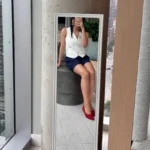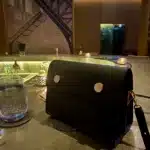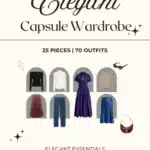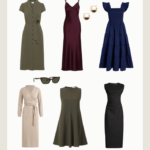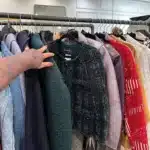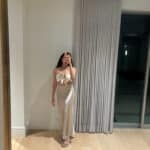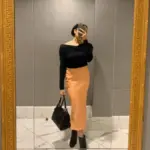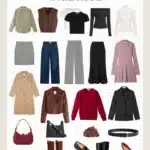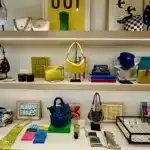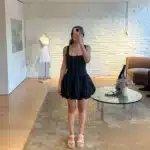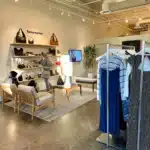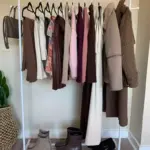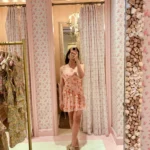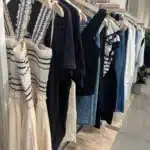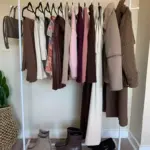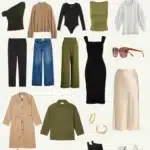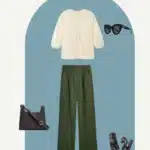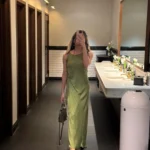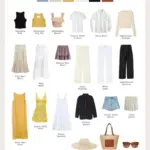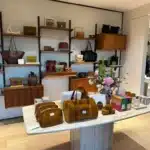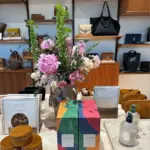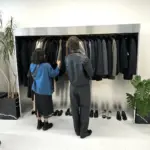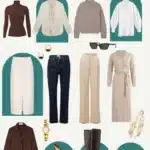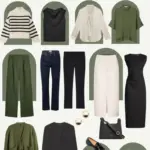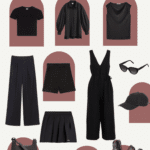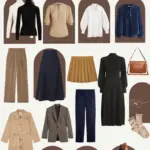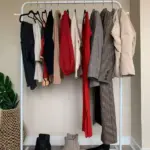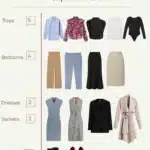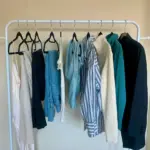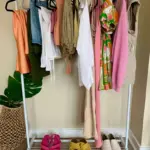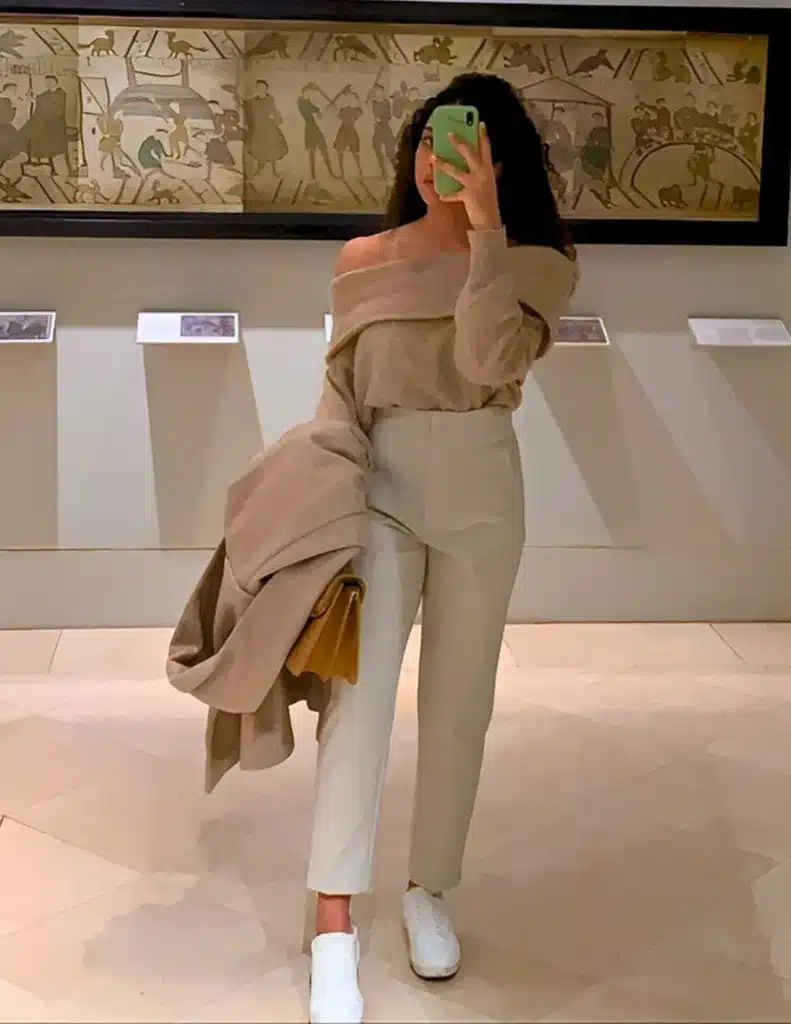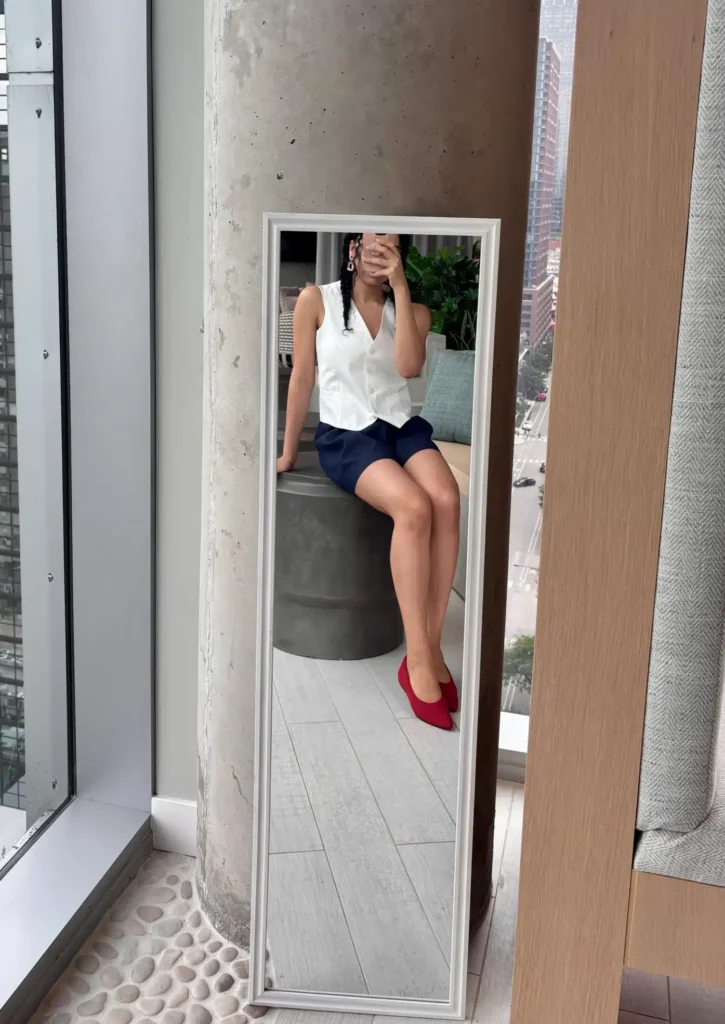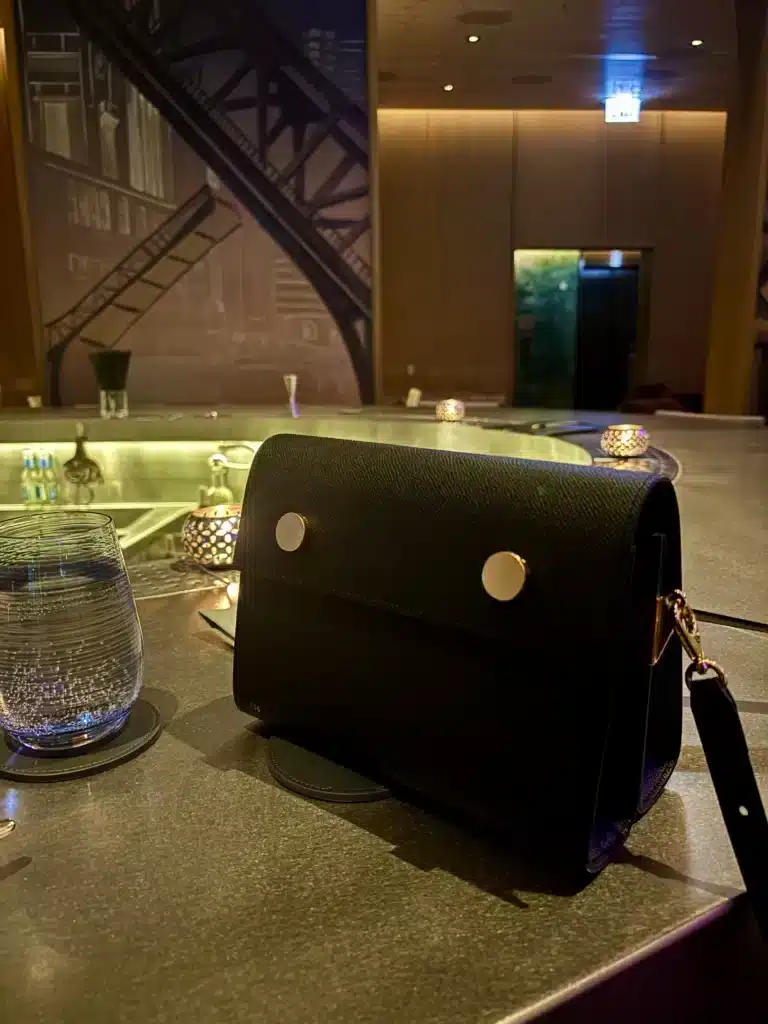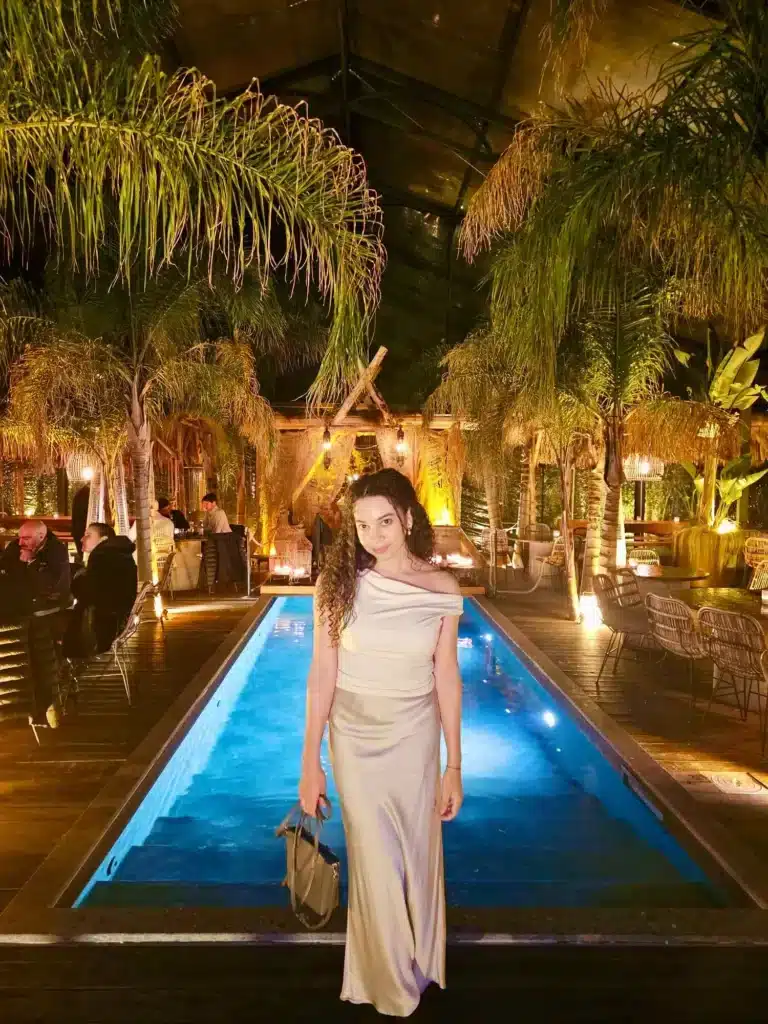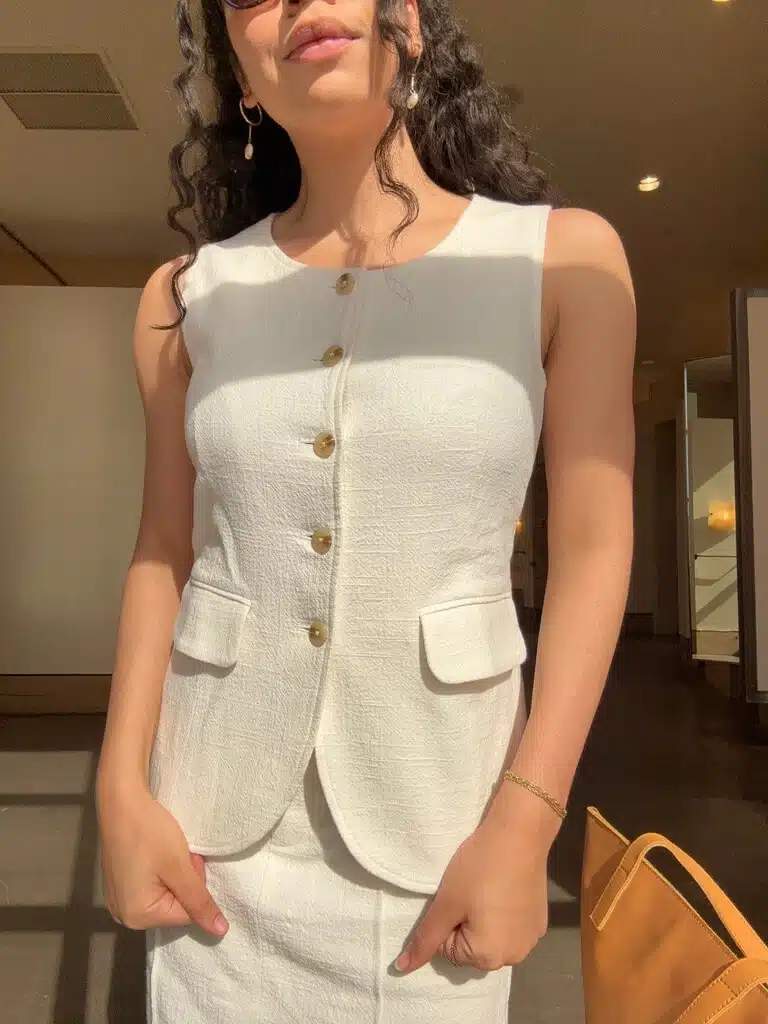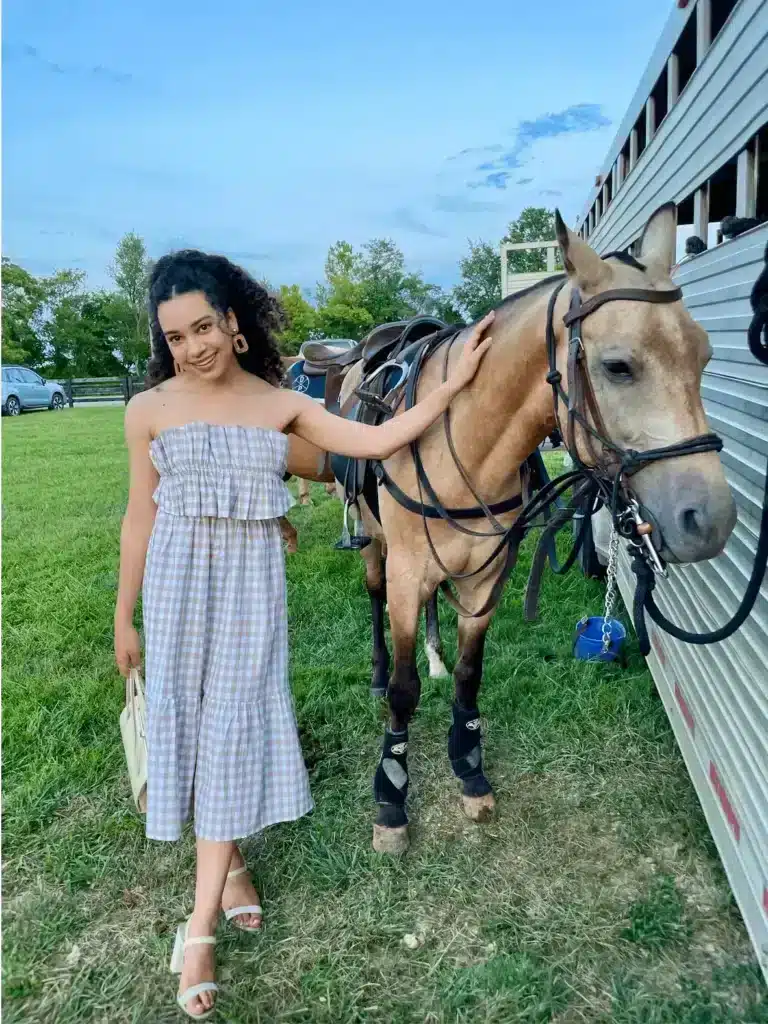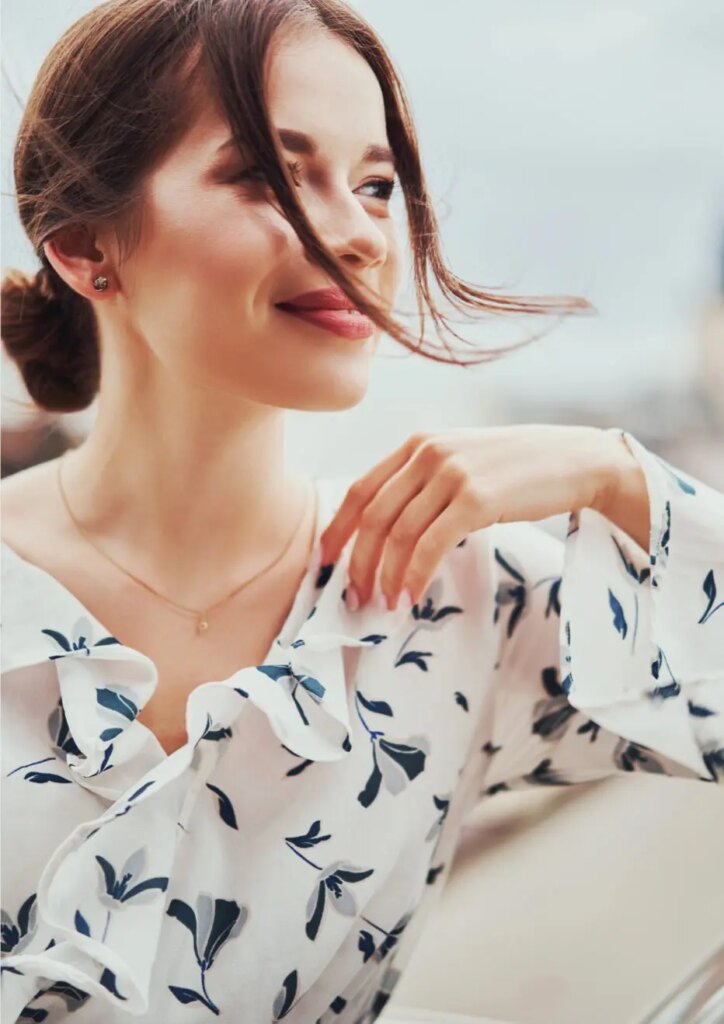Wondering how to create a capsule wardrobe color palette that compliments your style, complexion, and lifestyle? You need not navigate the colorful corridors alone! Below, we’ll delve into the art of building a wardrobe color palette that suits your personal style.
For a wearable color palette that’s tailored to you, scroll on down!
WHY HAVE A CAPSULE WARDROBE COLOR PALETTE
Yes, the visually gratifying cohesion of a well-planned wardrobe brings joy to our fashion-forward hearts. But the benefits of a curated wardrobe color palette extend beyond aesthetics. With a well-defined capsule color palette, you can:
- Save time getting dressed. Good news, your calendar just got a little clearer. By limiting your color choices to a select few that complement each other, you’ll spend less time staring at your closet wondering what to wear.
- Elevate your mood. We know that Color has a powerful effect on our mood and emotions. Harness this power with a capsule wardrobe color palette. By choosing colors that you love and that complements your complexion, you’ll feel more confident and uplifted.
- Reduce decision fatigue. Why waste energy on endless wardrobe choices when a capsule wardrobe color palette can streamline getting dressed? There’s one less thing to devote your valuable mental energy to each day.
6 WAYS TO CHOOSE A CAPSULE COLOR PALETTE, FROM LOW TO HIGH EFFORT
Think there’s one magic formula to create a capsule wardrobe color palette? Not at all.
The truth is, there are many roads that lead to capsule color bliss. Some, like seasonal color analysis, require more work upfront but offer custom results. Others, like color palette generators are low effort but will require more trial and error as you move along.
Here are 6 different ways to build a wardrobe color palette, arranged from least to most effort.
1. USE COLORS IN YOUR CURRENT CLOSET
Method one requires minimal effort and can yield great results. Look at your current closet. Pull out your most worn-items (emphasis here on most worn). What colors and patterns are repeated? To get the most value, pull out all your favorite items and snap some photos. Then, use a color palette generator to pull out the dominant colors. Here’s an example of my capsule closet:
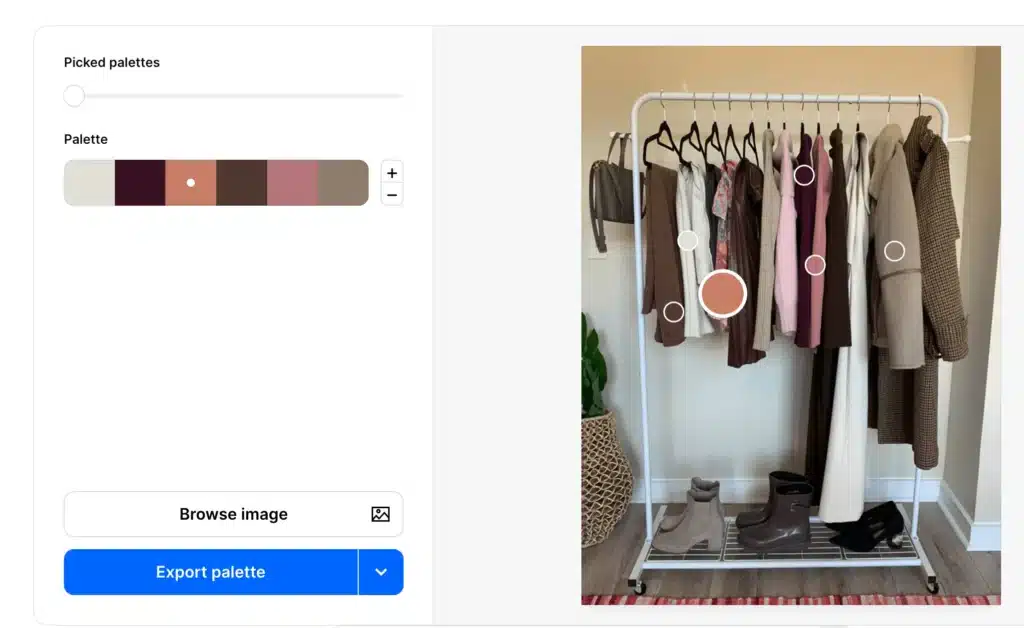
As you can see, the base colors in my wardrobe are neutrals- tan and cream. But I have complementary colors of plum and accents of pink and orange. The generator pulled out 6 colors.
Psst. Check out the capsule wardrobe checklist for the essential items for a stunning closet.
TIPS FOR GETTING THE MOST ACCURATE COLORS FROM A GENERATOR:
- Remove pieces you don’t wear often from the photo
- Include items you wear often and that complement your features
- Crop the photo to remove distracting background colors
Effort Level: Low
Best for: People with decluttered closets and a solid sense of what colors they like
2. CREATE A VISUAL BOARD
Not feeling confident about where to start with your color selection? It’s time for a mood board! The goal here is to hone in on a color palette that is wearable and aligns with your personal style.
1. COLLECT A RANGE OF VISUALS
Get on Pinterest and start pinning images with colors and patterns that you are drawn to. Save images that represent the colors you are drawn to in your daily life. Look for images of clothing and accessories that feature colors you love and would feel comfortable wearing.
2. FIND PATTERNS IN YOUR SELECTIONS
As you save images to your visual board, jot down which colors appear on repeat. You’ll begin to notice a pattern of colors that you are drawn to, which can help guide your color palette selection.
3. USE PINTEREST FOR A COLOR PALETTE GENERATOR
Once you have a handful of colors, you can look in your closet and see what aligns with current clothing. Then, go to pinterest and type in your colors to generate color palette ideas. For instance, I have a lot of tan and blush pink in my wardrobe. So here’s what I got when I typed in tan and blush color palette:
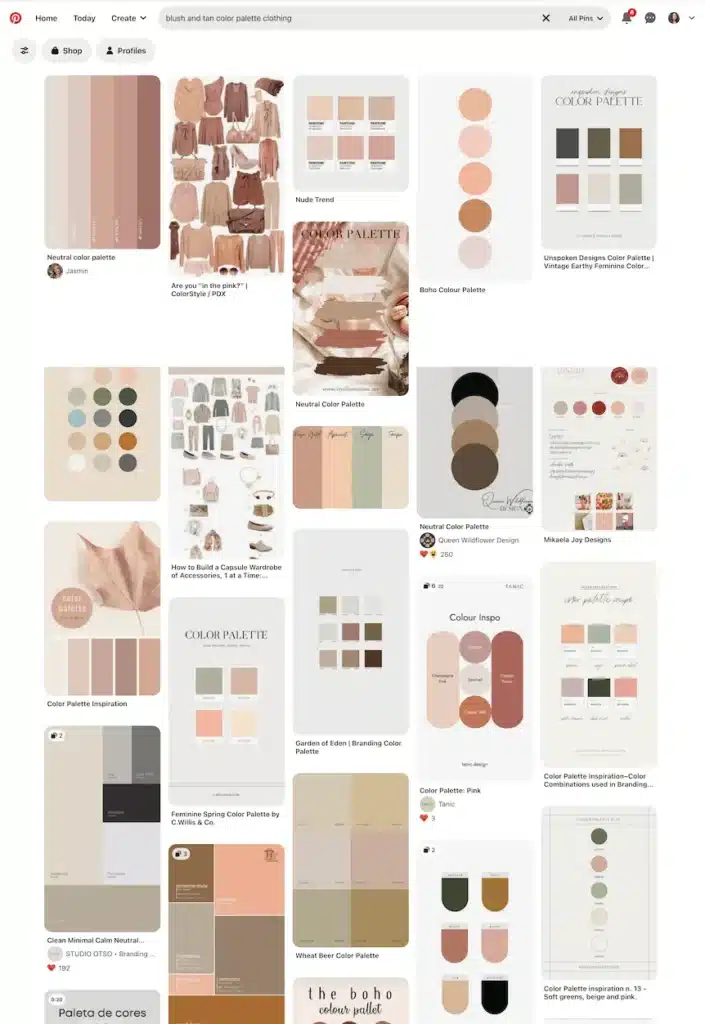
Pinterest offers some cohesive color palette ideas that I can sort through to find what’s best for me. Since I also have soft green pieces in my closet, I could add that as an accent color in the form of a bodysuit and tailored trousers.
Effort Level: Low
Best for: People who are struggling to define their color preferences or have too many colors and need to hone in on a few key shades
Craving a closet that’s chic and affordable? This guide will help you build a capsule wardrobe on a budget.
3. USE COLOR THEORY FOR WARDROBE COLORS
Color theory is not a concept reserved for lecture halls at prestigious art schools. It’s a valuable tool for anyone looking to understand how colors interact with each other. To use color theory when building your wardrobe color palette, look at the color wheel.
From here you can use analogous colors or monochromatic ones to create a beautiful color scheme. Colorful capsule wardrobe, here we come!
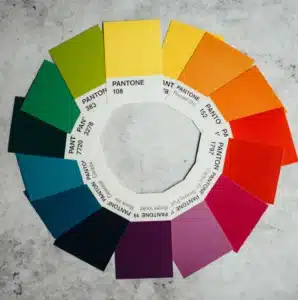
ANALOGOUS COLORS
- Select a base color. This can be any color you like, but neutrals like black, white, gray, and beige work well as a starting point
- Examine similar colors on the wheel. Look at the colors adjacent to your base color on the color wheel. These are called analogous colors and they work well together because they share a common base color.
- Choose two or three analogous colors. Choose two or three analogous colors to use in your capsule wardrobe. You can use lighter and darker shades of these colors to add depth and interest.
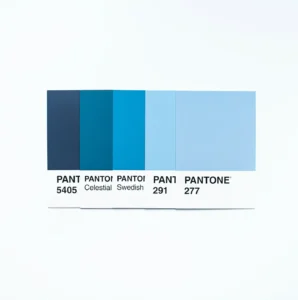
MONOCHROMATIC COLORS
- Choose your dominant color. This color will be the base for the rest of your wardrobe colors. So be sure to choose a color that you love and that looks great on you. Bonus points if you already own a lot of pieces in this color.
- Pick related shades. This means choosing colors that are either lighter or darker than your dominant color. So if your dominant color is navy blue, for example, you might choose shades of blue such as sky blue or royal blue.
- Pay attention to texture and fabric. When everything is the same you, texture and fabric act as the spice that adds depth to your outfit. Include different textures such as denim, linen, and silk for variation in your closet.
Effort Level: Medium
Best for: People who prefer a very cohesive and coordinated wardrobe look.
4. USE A CAPSULE COLOR FORMULA
For a plug and play option, you can utilize a capsule color palette formula. This is what I recommend in my guide to building a capsule wardrobe. Here’s how it works:
To begin, you’ll want 5-6 colors in your wardrobe. Break them down into three categories:
- Neutral colors. These form the core of your wardrobe. Everything will be built around this. Have at least two of these. The more neutrals, the easier it is to mix and match pieces in your closet. Examples include black, white, and tan.
- Complementary colors. Sometimes called near neutrals, these support your neutral tones. They are usually muted, earthy hues that are highly versatile. Think olive, camel, burgundy, and chocolate brown.
- Accent colors. These are attention-grabbing shades like bright orange, emerald green, or cherry red that infuse your looks with personality. They are used to make outfits pop. Accent colors should make up the smallest portion of your closet.
TIPS FOR GETTING THE MOST OUT OF THE CAPSULE WARDROBE COLOR FORMULA:
- Set a maximum of 6 colors. This is the sweet spot that will offer variety while still keeping things easy to mix and match.
- Choose neutrals that flatter your skin tone. If you have warm undertones, opt for beige or warm gray. If you have cool undertones, opt for white or cool gray.
- Let your personal style guide color selection. When choosing complementary colors, consider your style and the occasions you’ll be dressing for. Love a timeless look? Go for colors like navy blue and olive green. If you prefer a more bohemian vibe, colors like rust and mustard will be the go to.
Here’s my capsule wardrobe color palette breakdown with six colors:
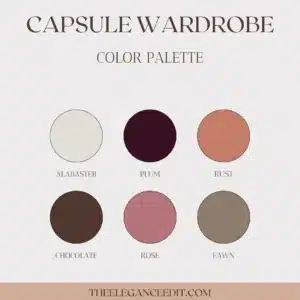
This is just one breakdown. Your capsule color scheme may look like:
- 3 neutrals, 2 complementary, and 1 accent color
- 4 neutrals, 1 complementary, and 1 accent color
- 2 neutrals, 1 complementary, and 2 accent colors
Effort Level: Medium
Best for: People who want a straightforward color selection method and a wardrobe that is easy to mix and match.
5. IDENTIFY YOUR BEST COLORS WITH COLOR ANALYSIS
To level up your color selection, consider doing a color analysis. This is a process that helps you determine which colors complement your skin undertones, eye color, and hair color.
The end result is a set of colors that bring out the best of you, for a truly radiant look. The two most common methods of color analysis are tonal and seasonal. .
TONAL COLOR ANALYSIS
You’ve likely heard of the importance of knowing your skin undertones. Tonal color analysis prioritizes determining the underlying color beneath the surface of the skin. These undertones fall into three categories:
Cool undertones: Pink, red, or blue hues
Warm undertones: Yellow or golden hues
Neutral undertones: A mix of cool and warm hues
To find out what your undertone is, you can use:
- Vein Test. Examine the veins in your wrist. If they have a blue or purple appearance, you likely have cool undertones. If your veins look green, you likely have warm undertones. Difficult to tell? You may have neutral undertones.
- Metals Test. For this test, pull out some jewelry and lay it against your skin. If silver makes your skin appear radiant, you likely have cool undertones. If gold makes your skin glow, you likely have warm undertones.
- Sun Test. Think about how your skin reacts to the sun. People with cool undertones tend to burn easily and find it difficult to tan. On the flip side, if you tan with ease and seldom burn, there’s a good chance your undertones are warm.
SEASONAL COLOR ANALYSIS
If you’ve heard a stylist or fashion professional talk about “determining your season” , they are referring to seasonal color analysis. This idea was popularized in Carole Jackson’s book Color Me Beautiful that categorizes people into one of four “seasons”: Spring, Summer, Autumn, and Winter.
Each season has a set of colors that best complement the individual’s skin undertones, eye color, and hair color. If you fall into the Spring category, for example, then you have warm, golden undertones, and will look best in colors like coral, peach, and turquoise.
To find out your color season, you can use a color analysis photo tool , a color analysis guide, or work with a professional for more definitive results (more on that in a moment). Once you know your season, you can look up what your best colors are and create a wardrobe color palette using a handful of them. I included color palette ideas for a soft summer and true winter below!
Effort Level: High
Best for: People who want to uncover their most flattering colors best colors and are willing to put in the time to self-analyze.
6. WORK WITH A PROFESSIONAL COLOR ANALYST
If you crave a capsule wardrobe color palette without trial and error, this method is for you. A trained color analyst can offer guidance on which colors will work well together and how to incorporate accent colors into your palette.
So, if you want a seasoned style pro to tell you what colors you should wear and what to avoid, then booking an appointment is a no-brainer. Look for
I’m ranking this as a high effort method because you do need to seek out a reputable stylist, set up a meeting, and pay for the service. However, the actual work of selecting the colors is completely off your plate in this option. So the time saved and confidence booth can make this worth the upfront effort.
Effort Level: High
Best for: People who want a flattering color palette without any quizzes, guesswork or confusion.
ADDING PATTERNS AND TEXTURES TO YOUR CAPSULE WARDROBE
Colors and patterns and textures, oh my! Adding patterns and textures to your wardrobe is a great way to keep things interesting. However, you need to add them in moderation so the wardrobe stays functional. Follow these tips for pattern (and texture) paradise:
- Mix and match patterns carefully. While pattern mixing can be a fun way to add interest to your outfits, it’s important to do so in a way that is cohesive and not overwhelming. Stick to one or two patterns in your capsule and ensure they work well together.
- Choose patterns that complement your color palette. Look for patterns that include colors from your capsule wardrobe to ensure that they will coordinate well with other pieces in your collection.
- Consider the texture based on season. Different textures shine in warm seasons while others are well suited for the cold. For example, lightweight fabrics like cotton and linen are tried and true summer fabrics while heavier textures like wool and cashmere are a god-send in fall and winter.
- Use textures that enhance your personal style. If you’re going for a classic or dark academia look, textures like leather, tweed, and wool are ideal. If you like more of a breezy yet elevated vibe, linen, cotton, and silk are beautiful options.
PATTERNS THAT I’VE WORKED INTO MY CAPSULE WARDROBE:
- Floral patchwork prints: Fun floral prints can add a feminine touch to my capsule wardrobe. I look for prints with small to medium-scale flowers in colors that complement my color palette.
- Plaid: Perfect for fall and winter, plaid prints can add a cozy and classic touch to my cold-weather capsule wardrobes. Again, I opt for plaids in colors that are present in the rest of my capsule wardrobe.
- Polka Dots: Playful and retro, polka dots have earned their place in my capsule on occasion. I choose small to medium-sized dots in colors that work well with my other pieces.
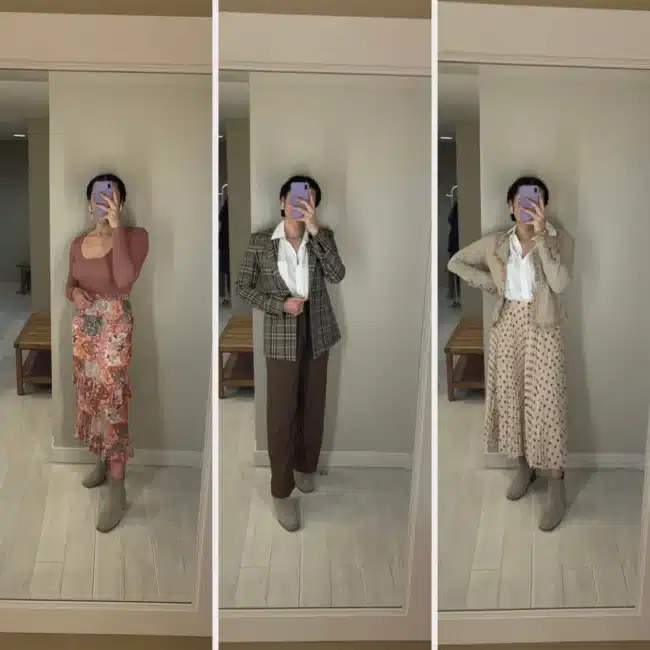
CAPSULE COLOR PALETTE EXAMPLES
For those seeking colorful inspiration, here are several examples of capsule wardrobe color palettes. These offer a glimpse into the harmonious aesthetic of a thoughtfully curated color scheme. Feel free to edit them to work for your lifestyle and color season.
WARM CAPSULE COLOR PALETTE
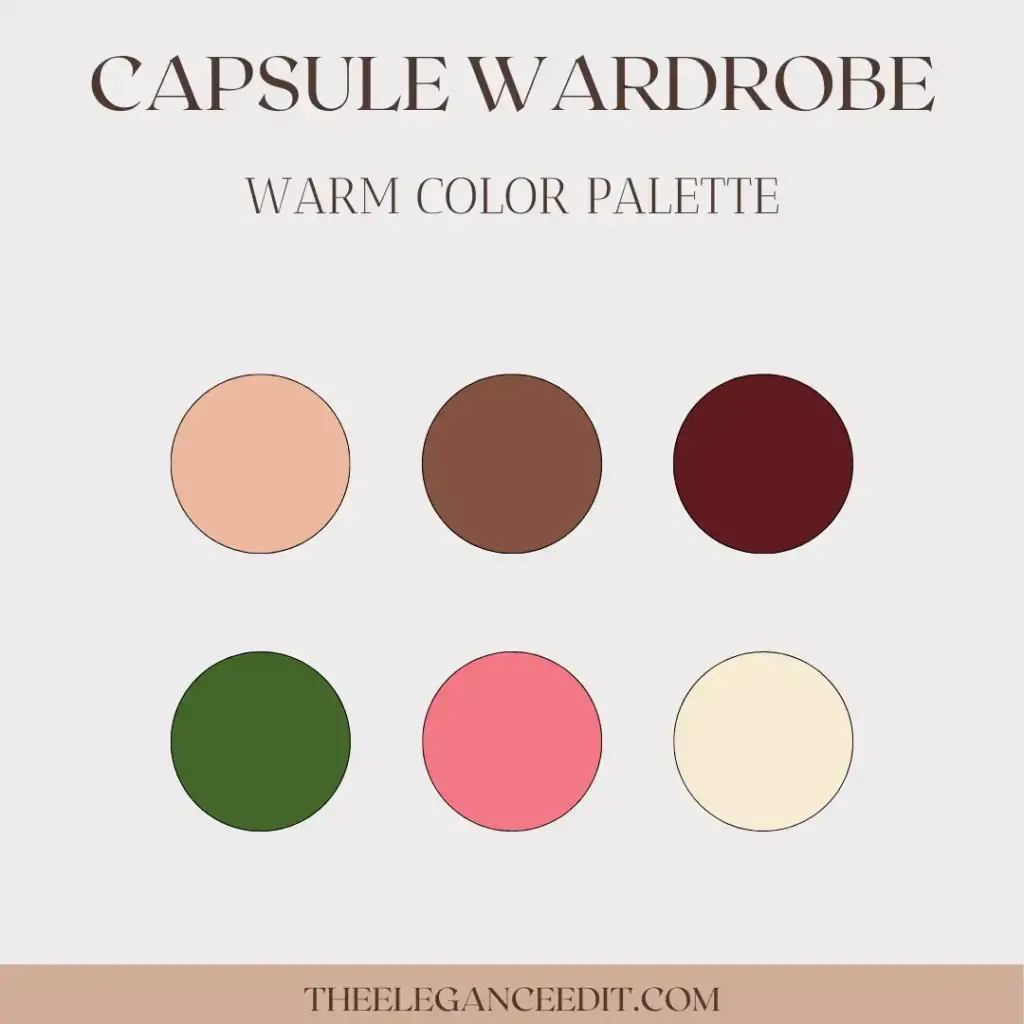
When putting together a warm capsule color palette, be sure to balance bold hues with neutral shades. Think taupe, beige, and ivory. The result is a balanced look that is easy to mix and match.
COOL WARDROBE COLOR PALETTE
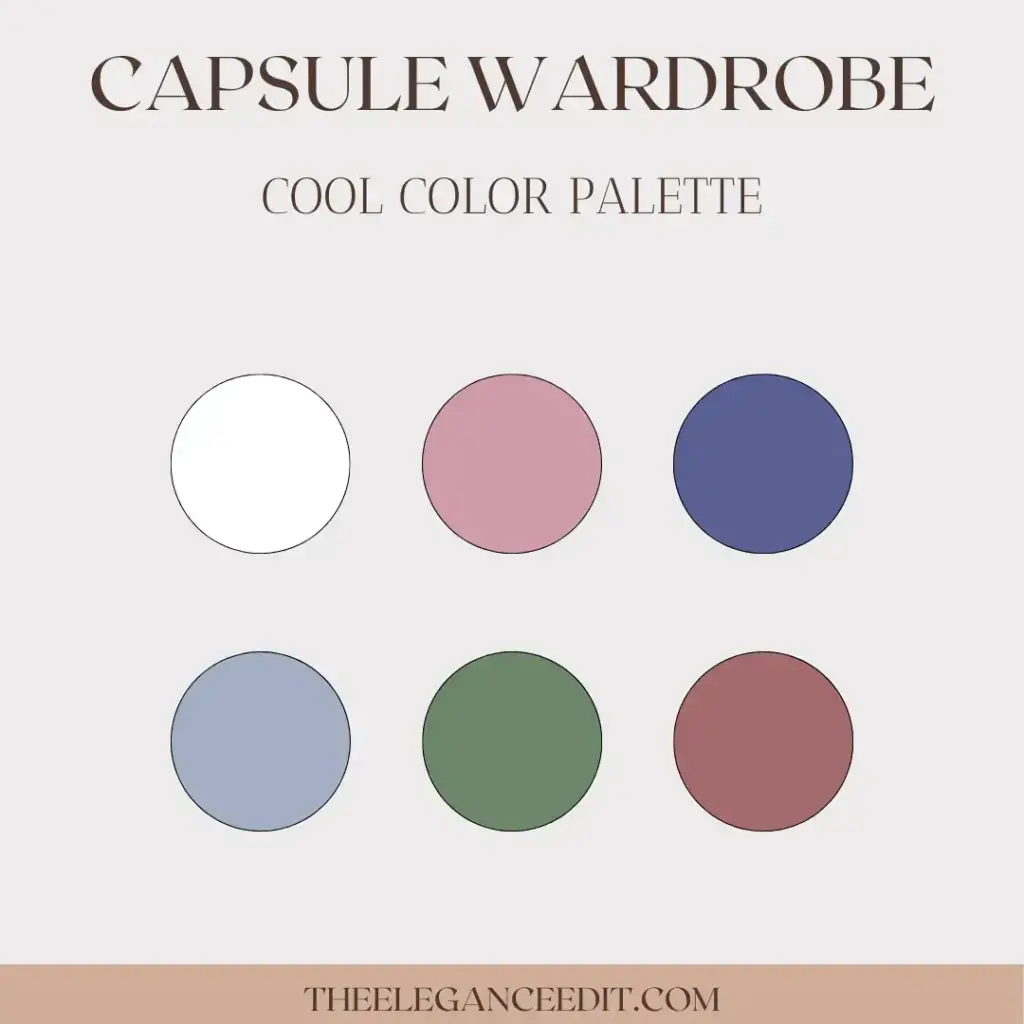
Crafting a cool capsule wardrobe color palette? Aim to balance pastel shades with darker hues like navy and gray. That way, you ground the lighter colors and have a well-rounded closet.
NEUTRAL CAPSULE COLOR PALETTE
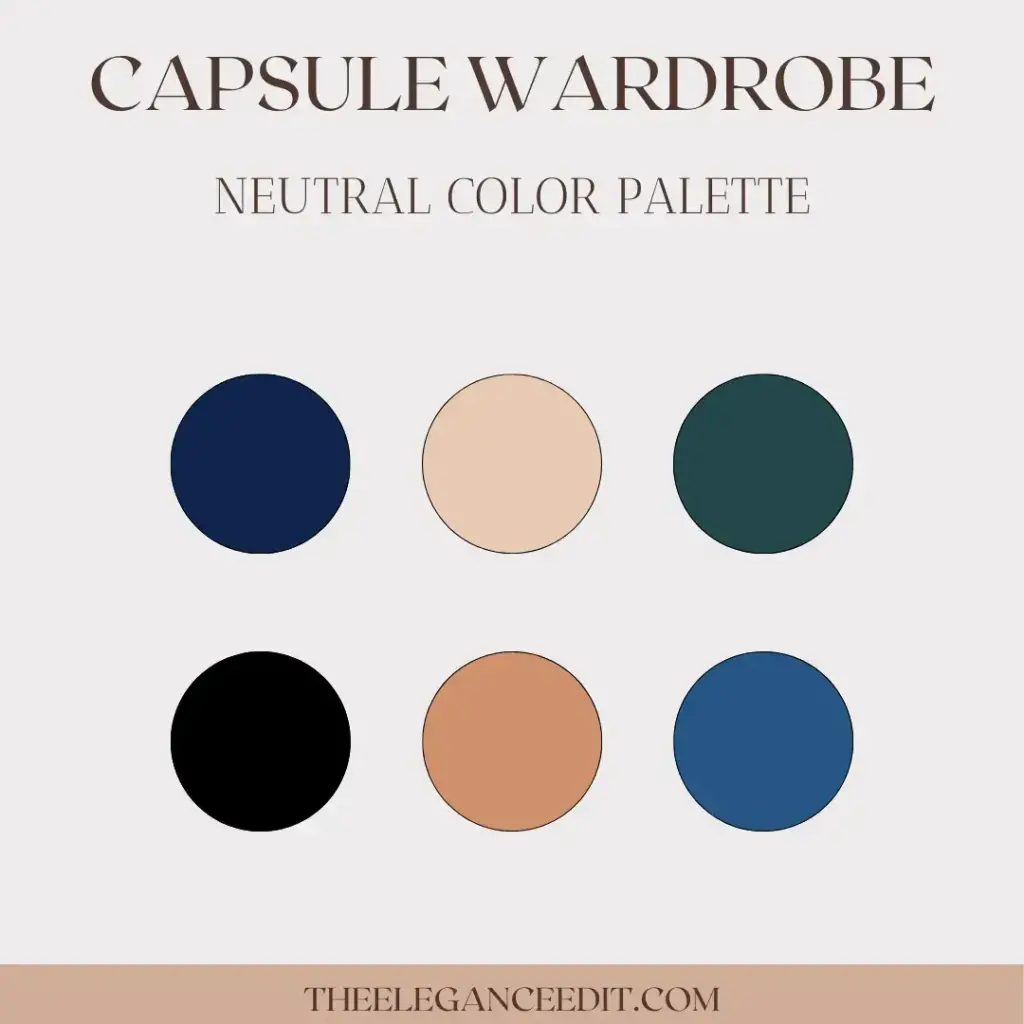
Neutrals are often muted and understated. Hello, perfect year-round wardrobe colors. Neutral colors can also be used to ground bolder hues to give your outfits a well put- together look.
SOFT SUMMER WARDROBE COLORS
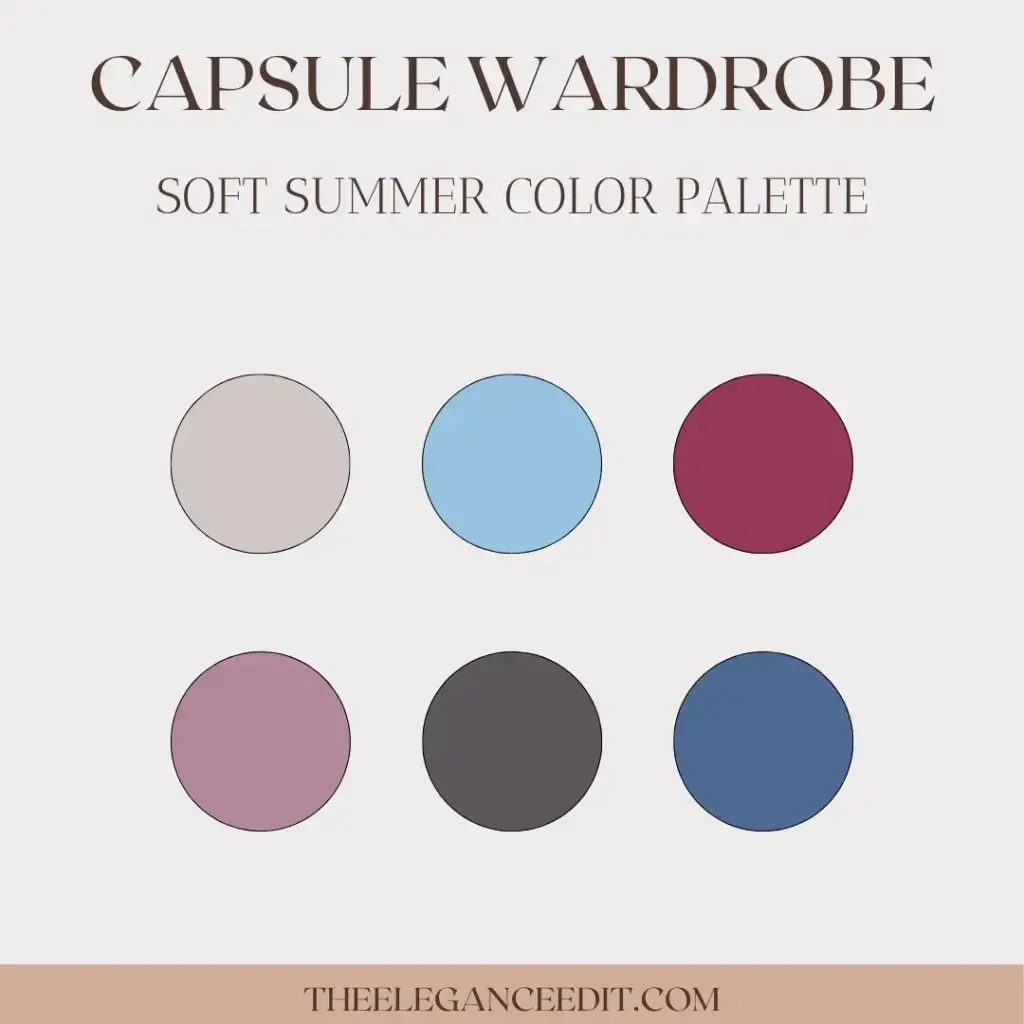
Cool tones. Muted colors. A soft summer color palette is a calm and beautiful one for those who fall into this color season.
COOL WINTER WARDROBE COLORS
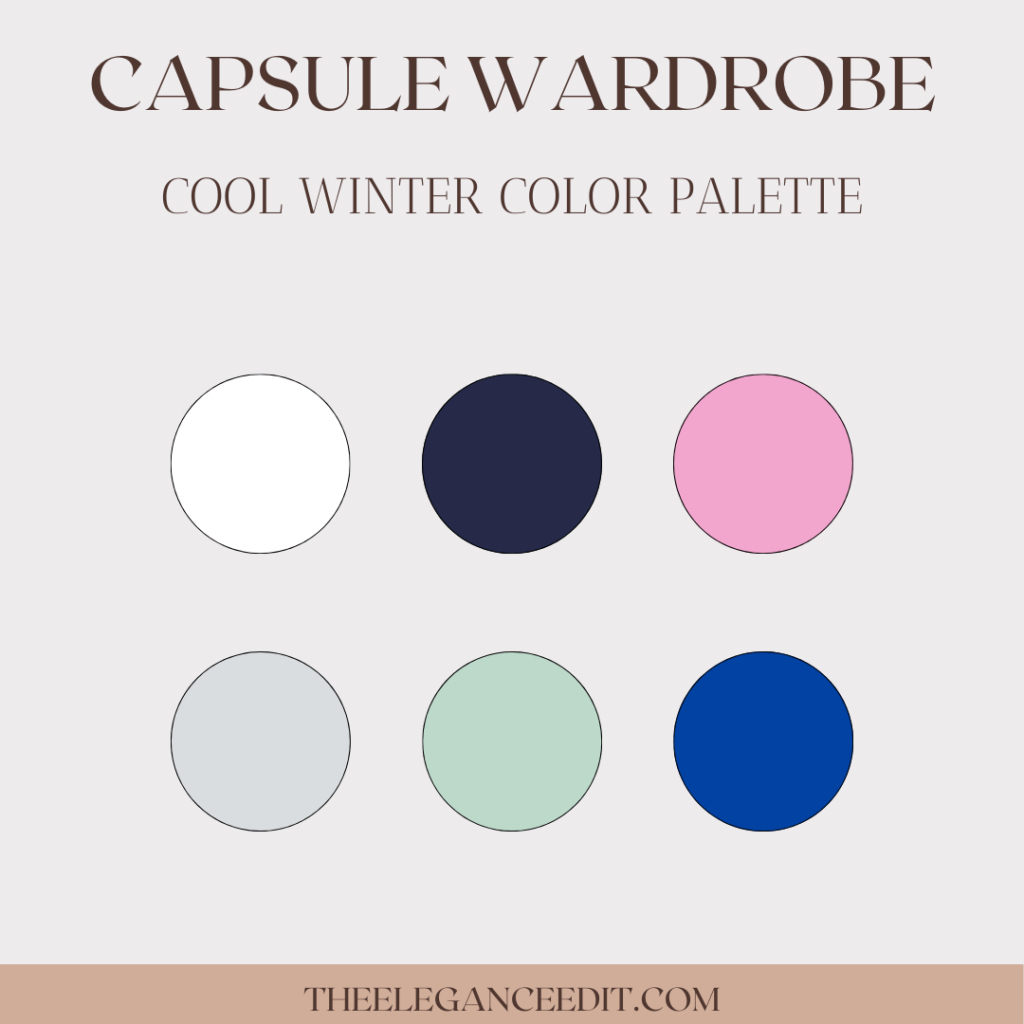
Are you a cool winter? Well your best wardrobe colors will be include deep rich hues and cool-toned shades. Simple and sophisticated, this palette is a beautiful one.
FALL CAPSULE WARDROBE PALETTE
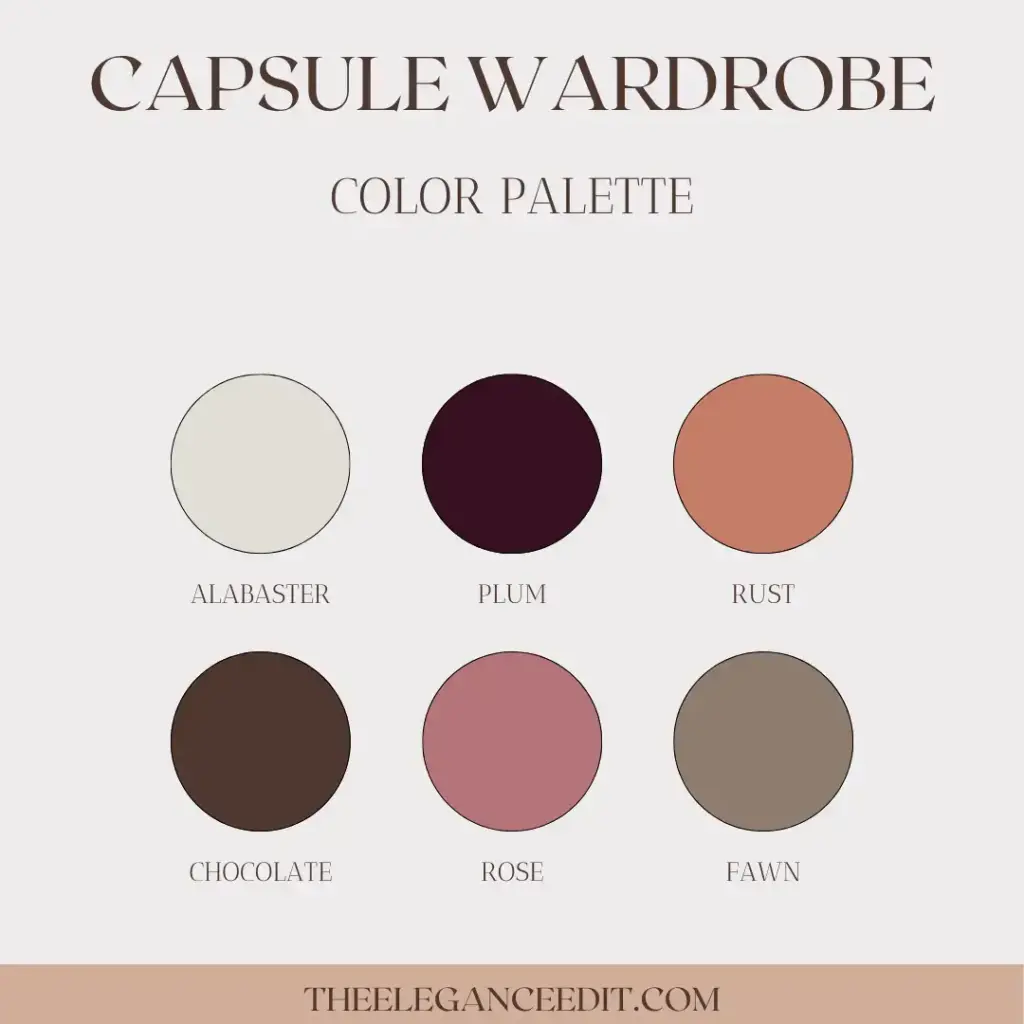
If you’re looking to create a fall capsule wardrobe, consider incorporating colors like burnt rust and deep plum. The colors evoke a sense of warmth and comfort while still being chic.
TIPS FOR SELECTING A CAPSULE WARDROBE COLOR PALETTE
You are the artist, your wardrobe is the canvas. if you read the capsule wardrobe formula guide, you know a bit of structure goes a long way in wardrobe creation. Here are a few tips to help you create a cohesive and versatile color palette.
1. Use what you already have.
Take note of the colors that already dominate your wardrobe. These are the colors that you feel comfortable in and are likely to wear often, so consider using them as a starting point for your color palette. No need to reinvent the wheel.
2. Choose colors that flatter your skin tone.
Pick colors that complement your skin tone and enhance your natural features. For example, if you have warm undertones, choose colors like beige, olive, and rust. If you have cool undertones, opt for colors like navy and emerald green.
3. Choose neutral colors for ease.
Neutral colors like black, white, gray, and beige are timeless and versatile. They can be paired with almost any color and can form the basis of a capsule wardrobe.
4. Consider the season.
In the spring and summer, lighter and brighter colors like pastels and vibrant hues are ideal. In the fall and winter, you can use warmer and darker tones like browns, burgundies, and deep blues.
5. Understand color psychology.
Color psychology can be a helpful tool in selecting a capsule wardrobe color palette that not only looks good but also makes you feel good. What colors make you feel confident? Which ones make you feel calm? Use these to guide your selections.
6. Draw inspiration from nature.
Nature can be a great source of ideas when it comes to choosing colors. Look at the colors of leaves, flowers, and the sky. What uplifts you? What are you drawn to? Use this to help guide your palette.
CAPSULE COLOR PALETTE FAQS
The number of colors to include in your wardrobe color palette depends on your personal preference and lifestyle. But a general rule of thumb is to choose a range of 4-6 colors that complement each other well and can be easily mixed and matched to create multiple outfits.
Remember that you don’t need to include every color that you love in your capsule wardrobe. Instead, focus on a few key shades that are versatile enough to pair in many ways. That way you can create lots of outfits that keep you feeling confident.
To create a functional color palette, start with neutrals since they are timeless and versatile. Then, choose complementary colors to add depth. Work with your natural skin, hair, and eye color to select flattering tones that you’ll look radiant in. Determining your color season will be a big help in this step.
It’s one thing to love a color. It’s another to love wearing it. So use these tips to generate a color palette that you can wear again and again.
Yes, patterns can definitely be included in your wardrobe color palette. They allow you to express your personal style. However, it’s important to consider how they will fit in with the rest of your colors and make sure they complement each other well.
To get the most out of your clothes, select patterns that include colors present in your wardrobe. For example, if you have a palette of neutral colors like tan, white, and olive, add in a white skirt with olive flowers or a tan and white striped shirt.
Whether you’re looking to streamline your wardrobe or do a total closet reset, a capsule wardrobe color palette offers structure and balance. If you’re hungry for more capsule content, explore The Elegance Edit blog, where you’ll find capsule wardrobe guides and outfit ideas. Thanks for reading!

